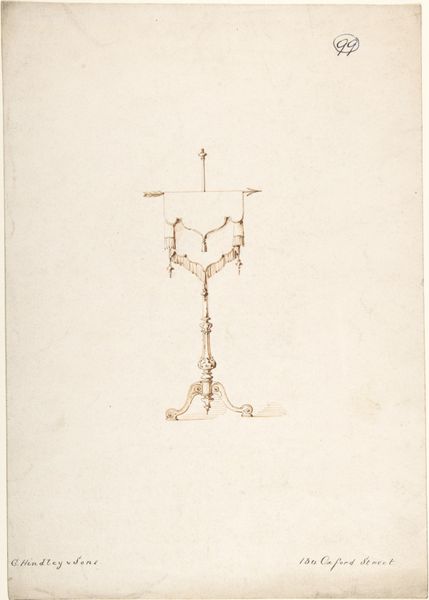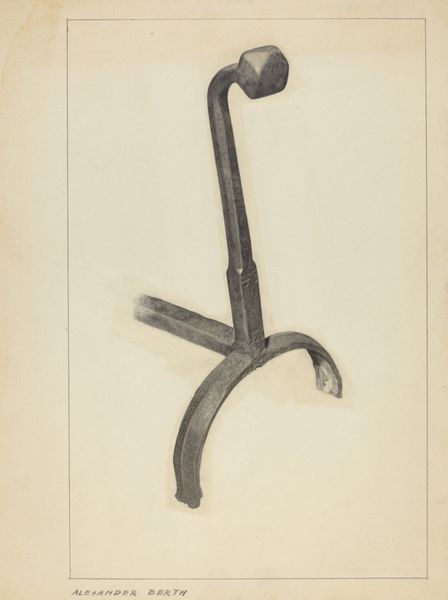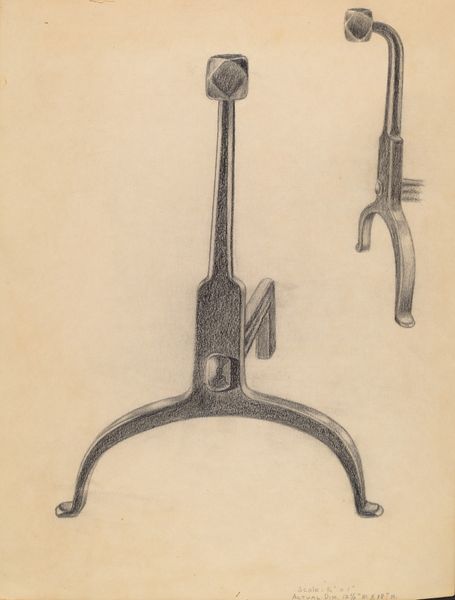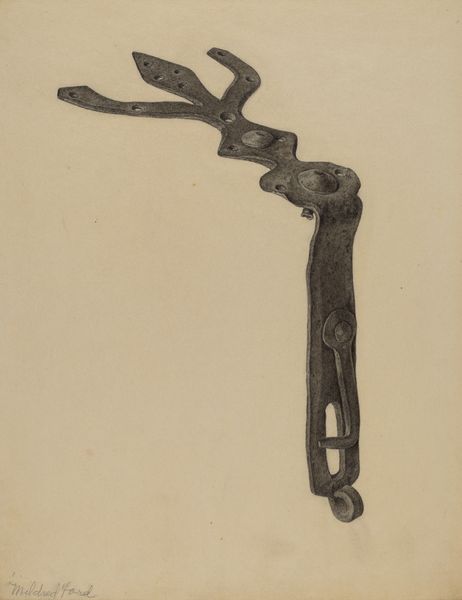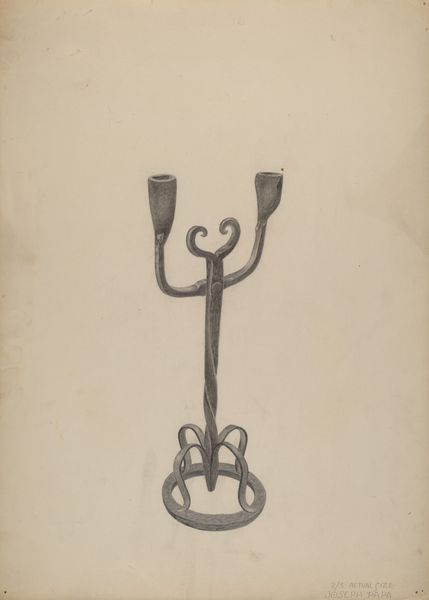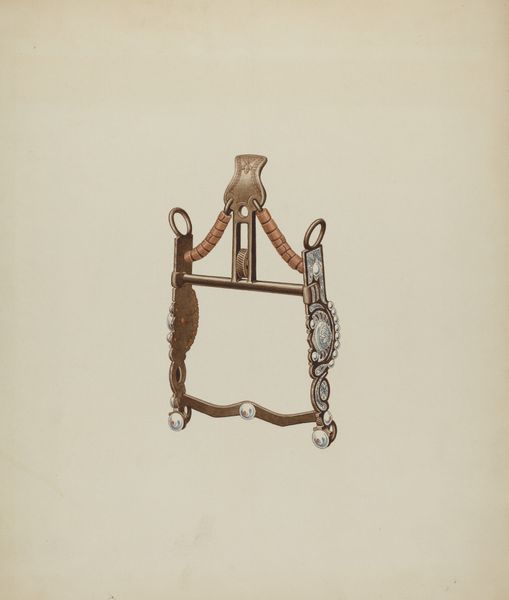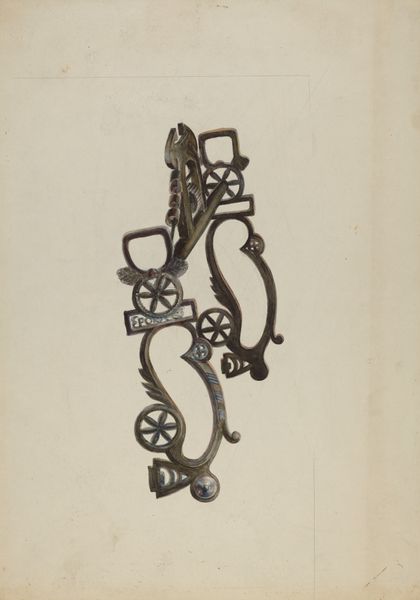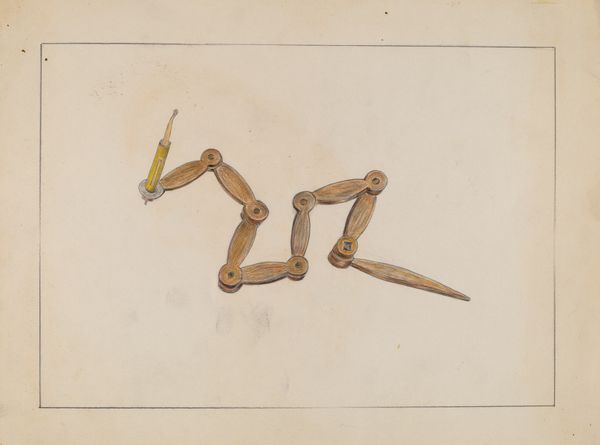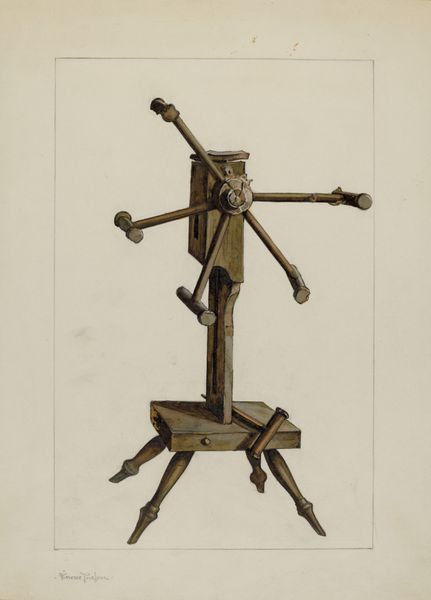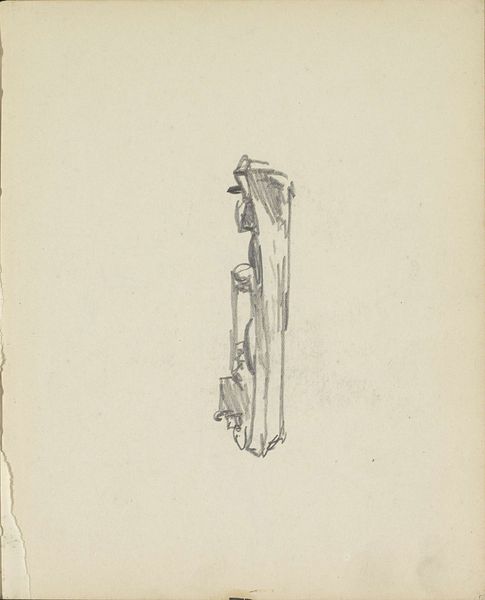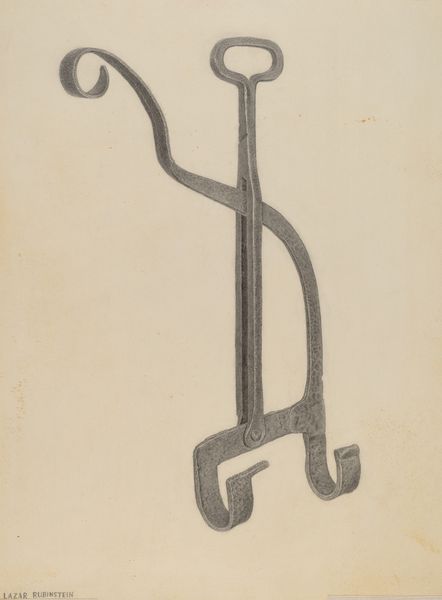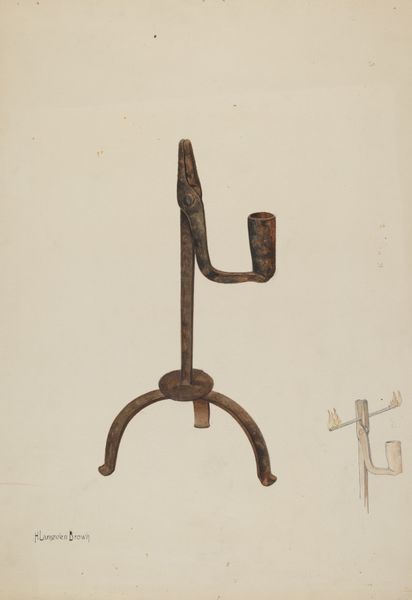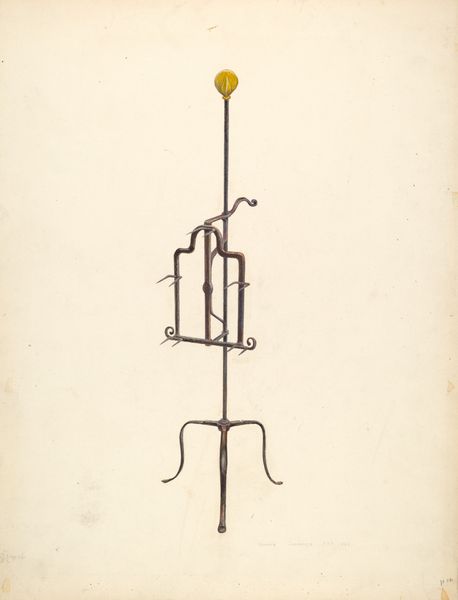
drawing, ink, pen
#
drawing
#
blue ink drawing
#
pen sketch
#
ink
#
pen
#
academic-art
#
realism
Dimensions: overall: 35.8 x 26.7 cm (14 1/8 x 10 1/2 in.)
Copyright: National Gallery of Art: CC0 1.0
Curator: Alright, let’s talk about Edward Jewett’s “Bit,” dating back to around 1939. He crafted it with ink and pen on paper. First impressions? Editor: Intricate and…restrained? There’s a precision that feels almost clinical, but those delicately rendered chains hint at something wilder. Curator: Yes! It’s that duality that gets me. Jewett's hand, the same one that rendered these academic drawings, probably held a very similar item for use every day. We often separate art and the everyday, but look closer. Editor: A cowboy’s daily life reduced to… geometry? Or maybe a way to connect with that world by immortalizing one of its tools? It is worth questioning how something used to subjugate a horse is worthy of so much detailed attention. Curator: Subjugation is such a loaded term, especially when you consider how intertwined humans and horses were—a necessary labor but maybe romantic, too. What this tool represented about our relationship to nature... Editor: Hmm. To view it, the bit's representation can romanticize that relationship or completely whitewash labor's role for both horse and human, or hide the pain of industrialization. There are choices to be made in how you see that. Curator: Choices… exactly! I see this object through choices; the owner’s choice to spend so much on decoratively wrought tool to give a little sparkle or gleam of precious metal even in dust and labor; and the artist’s choice, and what a later viewer is left to create for themselves in terms of interpretation. Editor: Fair. There’s an inherent tension, right? The bit itself speaks of control, of imposed will. Yet, Jewett's delicate rendering grants it an almost precious quality. Curator: Maybe it's a paradox? Or an appreciation, and a means of taming chaos, making beauty even from function. Like turning base metal into alchemical gold... or in this case, ink into memory. Editor: Ultimately, this drawing provokes crucial dialogues—about history, control, the ethics of labor and art. Curator: It all comes down to how we see, doesn’t it? A beautiful snapshot can conceal an uglier world, but the presence of this image can ask better questions of us all the same.
Comments
No comments
Be the first to comment and join the conversation on the ultimate creative platform.
